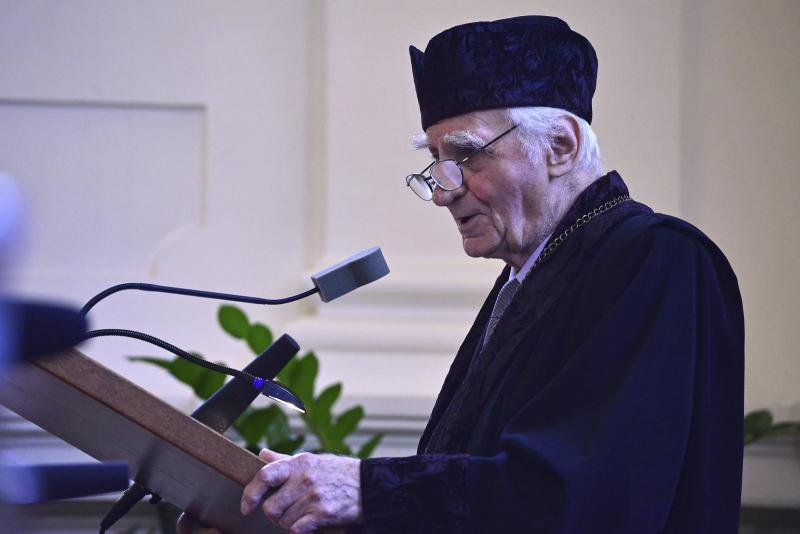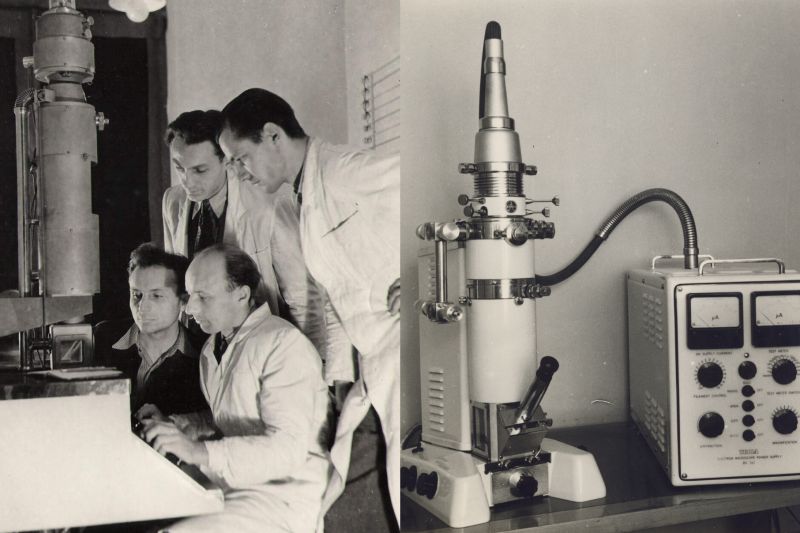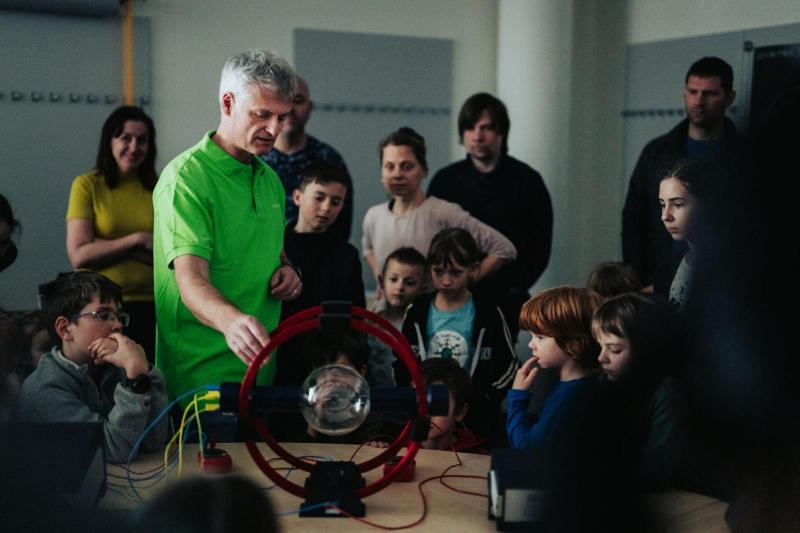100 years since the birth of the father of Czechoslovak electron microscopy
Brno is at the global forefront of electron microscopy. It draws primarily from the legacy of the scientist, physicist, and university lecturer Armin Delong, whose influence remains strong at Brno University of Technology (BUT), where the globally recognized physicist studied and received an honorary doctorate in 2014. The university considers electron microscopy as its strategic area and engages in research, teaching, and popularization activities in this field.

A pioneer of technology and science associated with BUT
Armin Delong was born on 29 January 1925 in Bartovice, Ostrava, and passed away on 5 October 2017 in Brno. He was drawn to technology from an early age, building radios and transmitters and conducting physics experiments. His life was closely intertwined with the history of BUT. Immediately after the war, he began studying at the then Czechoslovak Technical University of Eduard Beneš, where he worked as a research assistant and assistant to Professor Aleš Bláha at the Institute of Theoretical and Experimental Electrical Engineering, Faculty of Electrical Engineering and Communication (FEEC BUT). He also served as the long-time director of the Institute of Instrumentation Technology at the Czechoslovak Academy of Sciences and between 1967 and 1971 led the Department of Solid-State Physics at the Faculty of Science, Masaryk University.
As part of the 115th-anniversary celebrations of the Brno University of Technology, he was awarded an honorary doctorate on 16 November 2014 based on a proposal by FEEC BUT.
Founder of electron microscopy in Czechoslovakia
In 1951, together with classmates Vladimír Drahoš and Ladislav Zobač, Armin Delong built the first Czechoslovak tabletop electron microscope BS 242, which won a gold medal at the World Exhibition EXPO in Brussels in 1958. Subsequently, they joined the newly-established Institute of Instrumentation Technology of the Czechoslovak Academy of Sciences in Brno. TESLA made electron microscope manufacturing one of its key activities, becoming a global leader in the field for two decades thanks to Delong's ideas.
Delong’s legacy lives on in Brno’s top firms and institutions specializing in electron microscopy – such as Delong Instruments, where the professor continued to work even in advanced age. “If you train good students, you might hope they’ll keep you close to the field even after retirement. I managed to achieve this,” Delong recalled in 2015. Other companies that carry his work forward include TESCAN, NenoVision, and Thermo Fisher Scientific, which is among BUT's key partners. Its technological center in Brno produces cutting-edge electron microscopes and spectrometers used worldwide.

Electron microscopy at BUT
Czechoslovak electron microscopy would not have been possible without the support of universities, and Armin Delong’s legacy naturally continues at Brno University of Technology. “Technological and scientific progress happens at universities and technical schools. If it doesn’t, that’s a problem,” Delong emphasized in a 2013 interview.
BUT considers electron microscopy as its strategic focus. The university is an integral part of the Brno innovation ecosystem #brnoregion and collaborates long-term with local institutions and companies in developing electron microscopes, new methods, and their applications. “Microscopes serve various purposes – from studying structure, size, topography, and morphology to analyzing defects, fracture surfaces, and quality control of produced micro and nanostructures,” says Petr Lepcio from CEITEC BUT, where electron microscopes are used in nearly every research project. CEITEC Nano houses seven microscopes, which are among the most popular instruments in its labs.
Electron microscopy is also intensively studied by scientists at the Faculty of Mechanical Engineering (FME BUT), where it is pursued by the Institute of Physical Engineering, which is closely linked to CEITEC BUT. Through programs such as Physical Engineering and Nanotechnology or Precision Mechanics and Optics, the faculty educates top experts, many of whom find employment in the aforementioned companies after graduation. The laboratories of the Institute of Materials Science and Engineering at FME BUT have also since 1974 owned historical transmission electron microscope BS 540, still used for teaching purposes. This microscope was developed with contributions from Tesla Brno, VUT, and CAS, as well as Armin Delong. It was the best microscope manufactured in the CSSR at the time. “Research using this instrument resulted in several patents and countless final theses, probably hundreds. It was also crucial for industrial practice, providing measurements for many factories,” describes Tomáš Podrábský from FME BUT.
The field is also represented at Delong’s alma mater, FEEC BUT. The Department of Physics hosts the Laboratory of Electron Microscopy, conducting microscopic surface and material inspections.

Popularization of electron microscopy
BUT significantly contributes to organizing the Days of Electron Microscopy (DEM), aimed at popularizing the topic among families, schools, and professionals since 2017. Brno Observatory and Planetarium has been the main organiser recently in partnership with companies, universities, and other institutions, offering access to usually restricted labs. Last year’s event focused on microscopic villains, with BUT representatives offering lectures, workshops, lab tours, and an exhibition of oversized viruses. This year’s DEM will occur on 24–30 March 2025, with the theme “Villain or Hero”, symbolized by a giant inflatable bacteriophage.
BUT is regularly represented at DEM by experts from FME BUT and CEITEC BUT. At CEITEC BUT, Stanislav Průša, also active at FME BUT, promotes (not only) electron microscopy, organizes VUT Junior, CEITEC Summer School, and CEITEC Nano lab tours. “The number of students interested in science and technology has stagnated or even declined. Reversing this trend is a societal priority. Engaging high school students and teachers is essential, but research shows that introducing fields like electron microscopy to elementary students and their parents is equally important, as younger students are often more receptive,” says Průša.
Technical Museum in Brno will celebrate the anniversary with a gathering of Armin Delong’s family, colleagues, students, and successors, with events throughout the year. Visitors can also explore the Optics exhibit, which showcases the history of microscopes, including the rare BS 242 tabletop electron microscope.

Source: vut.cz/en
Author: Mgr. Bc. Tereza Walsbergerová, Ph.D.
| Responsible person | Ing. et Ing. arch. Jana Němcová |
|---|---|
| Date of publication |









